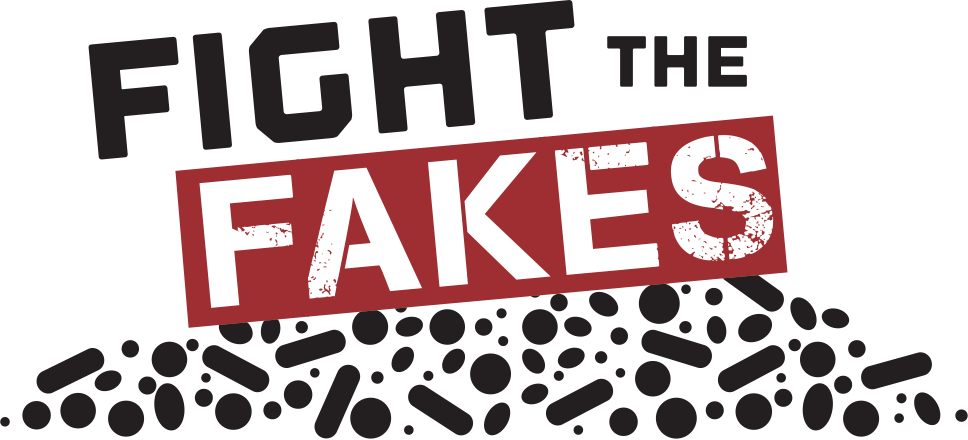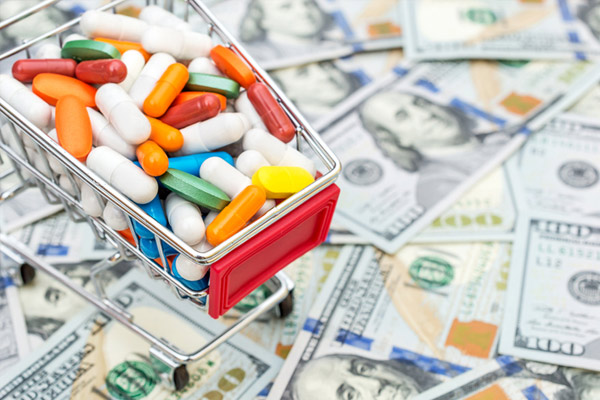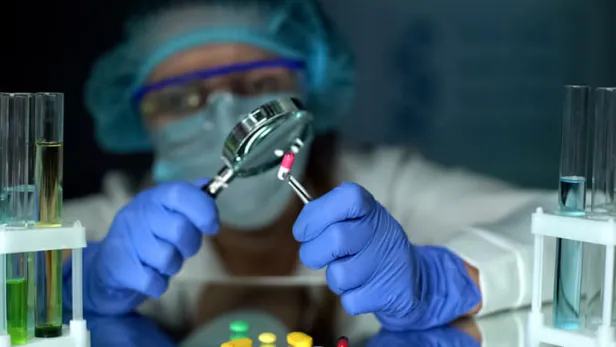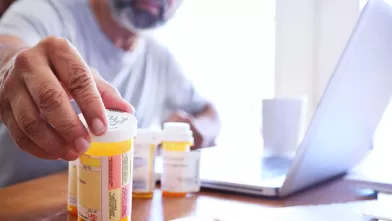Pfizer’s Role In Combatting Fake Medicine
According to the Pharmaceutical Security Institute (PSI), law enforcement officials uncovered 6,897 incidents of counterfeiting, illegal diversion and theft of pharmaceuticals in 142 countries in 2023. The crimes involved more than 2,440 different medicines across every therapeutic category. The PSI documented 4,894 arrests for pharmaceutical crime in 2023, the largest number of arrests achieved in 22 consecutive years of data.
To assist law enforcement agencies to prevent counterfeit Pfizer medicines from reaching patients, Pfizer Global Security have provided product training to authorities from 182 countries.
Interpol Operation Pangea XVI in 2023 involved police, customs and health regulatory authorities from 89 countries. The annual campaign, targeting counterfeit and illicit medicines, resulted in USD $7m in illicit medicines seized, 72 arrests worldwide and the closure of more than 1,300 criminal websites and online marketplace pages containing adverts for illicit medicine products.
We have an aggressive campaign to fight counterfeit Pfizer medicines.
Take action to make counterfeit medicines more difficult for criminals to produce and easier to identify.
Identify those involved in manufacturing and distributing counterfeit medicines to facilitate preventative action.
Work proactively with Law Enforcement to prevent counterfeit Pfizer medicines from reaching patients
Pfizer has prevented over 302 million counterfeit doses from reaching patients since 2004.
The Risks of Buying Medicine Online
Fight the Fakes

Fight the Fakes is a campaign that aims to raise awareness about the dangers of fake medicines by telling the stories of those who have been personally impacted and of those working to put a stop to this threat to public health. It also outlines opportunities for action by organizations and individuals who are looking to support this effort.
Share Your Story DetailsThe Startling Reality
Counterfeit medicine is fake medicine, and they are a threat to the health and safety of patients around the world.
Counterfeit medicines are dangerous by their very nature – they are not produced under safe manufacturing conditions and they are not inspected by regulatory authorities. It is impossible to know what ingredients counterfeit medicines contain. Sophisticated counterfeiters will put some of the active ingredient in the fake medicine and make it look very similar to the real medicine.
The primary danger in taking a counterfeit medicine is that you are putting something into your body that not only may not help your current condition, but more alarmingly could result in harmful effects to your overall health.
No country or product is immune to the threat of counterfeit. Even in countries generally considered "safe," such as Canada, the United States, and many in the European Union, counterfeit medicines have entered the supply chain. The types of counterfeit medicines offered for sale without a prescription include, but are not limited to, lifesaving medicines such as those to treat cancer, bacterial infection antibiotics, diabetes, and anti-inflammatory medicines.
Reputable online pharmacies will ask for a prescription issued by a relevant healthcare professional and provide adequate warnings about the possible side effects of the drug.
Pfizer’s Anti-Counterfeiting Program
It is precisely because of the threat that counterfeit medicines pose to patients that Pfizer has implemented an aggressive and focused campaign to detect, disrupt and deter major manufacturers and distributors of counterfeit Pfizer medicines.
We work with wholesalers, pharmacies, customs offices, and law enforcement agencies worldwide to increase inspection coverage, monitor distribution channels, and improve surveillance of distributors and re-packagers. Most significantly, we conduct and manage pro-active investigations and refer the cases we develop to enforcement authorities. Our investigations are initiated in response to “leads” from a variety of sources, including complaints from patients and healthcare professionals, observations by members of our sales force, information concerning changes in sales volume and patterns from confidential informants and intelligence from enforcement authorities.
The Dangers
Many of these products don’t work at best, or at worst, they can kill you


The Problem
Each year, hundreds of thousands of people die from taking fake medicines
Illegal Pharmacies
How do you know if your online pharmacy is legitimate?


Consumer Tips
How do you know If you have a counterfeit medicine?
Pfizer's Efforts to Address Fraud
Today, fraud permeates every aspect of our lives. From a pharmaceutical perspective it can have a significant impact on the ability of patients to access safe and affordable drugs.
Global Security protects Pfizer against fraud and the potential impact to patients. Our anti-fraud measures are patient-centric designed to support Pfizer breakthroughs that save lives. We have a dedicated team with specialized expertise who monitor our business to identify and disrupt fraud impacting Pfizer’s patients, our employees, and our business operations.
How Can You Spot The Fakes?
Report IP Theft
The IPR Center encourages you to report potential violations of intellectual property rights
Report Details
Counterfeit medications are fake drugs made to resemble the genuine pharmaceutical manufacturers’ medicines.
Counterfeits may look like their authentic counterparts, but they are illegal and potentially lethal. Because counterfeit medications were not manufactured in a facility inspected by a regulatory authority and were not manufactured with your health and safety in mind, there is no way to know exactly what they contain, making them inherently unsafe.
If you suspect the Pfizer medicine you have purchased may be counterfeit, contact us at 1-800-438-1985
Every time you take a counterfeit medicine, you are putting your health and quite possibly your life at risk. Because counterfeit medicines are not manufactured in a controlled environment by an approved and reputable manufacturer, there is no way to be sure of its safety or efficacy.
At best, when you take a counterfeit medicine, nothing will happen, and you may not get sick or injured from taking the counterfeit. However, there is also a real possibility that the counterfeit does not contain the active ingredient, depriving you of the therapeutic benefit your doctor expects, which may delay your treatment or recovery, possibly irreversibly.
In some cases, the counterfeit medicine contains the wrong active pharmaceutical ingredient or additional harmful ingredient(s), which could jeopardize your heath, or even kill you.
Authentic medicines are manufactured safely, by trained personnel, in clean facilities, with quality control testing performed throughout the process, to assure the consistency and safety of the product, which in turn ensures that you are receiving the treatment that the medicine is supposed to deliver.
Currently, the most serious threat posed to patients is ordering medicines over the Internet, including through unsafe channels like social media, that could expose buyers to counterfeits.
The danger in ordering medicines from unapproved online sources is the lack of transparency as to the true location of the supposed “pharmacy” and authenticity of the medicines they dispense. There is also a risk of financial fraud and scams or identity theft when attempting to order medicines from illicit online sources.
For example, in the US, it is possible to safely order your medications from an online source: you can verify the online pharmacy through the NABP’s “Buy-Safely” program. In addition, if the website’s address has the top-level domain “pharmacy” at the end of the address, the website has been verified by NABP. For example – www.caremark.pharmacy has been verified by the NABP.
Counterfeit Pfizer products have been confirmed in at least 116 countries.*
Since 2004, Pfizer Global Security has partnered with Law Enforcement Agencies around the world to prevent at least 302 million counterfeit doses from reaching patients. (Pfizer Products Only)*
To assist law enforcement in preventing counterfeit Pfizer Medicines from reaching patients, Pfizer Global Security has provided product training to authorities from 164 countries.*
However, it is not just Pfizer whose medicines are being counterfeited. Based on Pharmaceutical Security Institute (PSI) data, counterfeit medicines have been confirmed in 153 countries.
*Source: Pfizer Global Security
In developed countries, such as Canada, the United States, Australia, and many of the European Union it is very unlikely that you will receive a counterfeit medicine from your domestic brick and mortar pharmacy.
In some cases, patients have noticed a different taste, consistency, or appearance of medicines that are later identified as being counterfeit, or they may have a different reaction to the counterfeit drug.
However, in more cases, many consumers may not know that the medicines they’ve purchased are counterfeits. That’s why it’s important to purchase prescription medicine from a legitimate pharmacy and pharmacist with whom you are familiar.
Contact your pharmacist, doctor, or us (1-800-438-1985) if you suspect or have questions about your medication.
Avoid websites that do not require a valid prescription and those that sell prescription medications merely by completing an online questionnaire.
Do not use social media as a mechanism by which to order prescription drugs.
Share your knowledge with family and friends.
Global Security protects Pfizer’s product life-cycle supply chain and associated manufacturing and research facilities by means of intensive physical security risk mitigation standards and assessments. Our best in industry physical security standards and assessment program focused on proprietary and third-party partner facilities ensures robust physical security preparedness, securing our colleagues and facilities while ultimately safeguarding company products for Pfizer’s patients.
Other Resources
Medicine Safety
Our commitment to medicine safety begins in the research laboratory and continues as long as the medicine is prescribed to patients anywhere in the world.










Product Contacts
No matter where you are in the world, it’s important that you have access to the right information about our products. Use this page to find the Pfizer website and contact number for your country.






